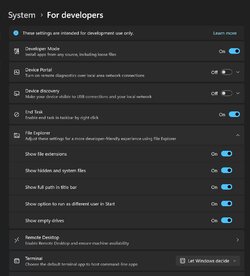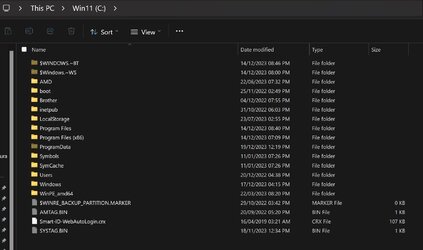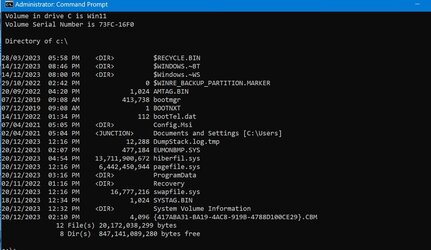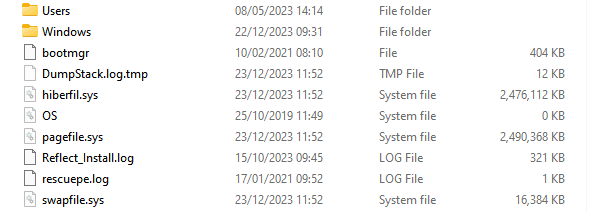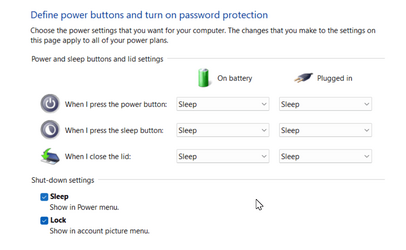jameswesthead
Active member
- Local time
- 2:09 AM
- Posts
- 17
- OS
- Windows 11
Windows 11 Version 23H2 (OS build 22631.2861)
I have discovered that it I cannot use file explorer to view the hiberfil.sys, pagefile.sys and swapfile.sys files from with file explorer. I have switched on "show file extension" and "show hidden and system files". I even switched on Developer Mode, even though I am not a developer (retired). See the attachments: system settings.jpg and File Explorer C drive.jpg.
I can only see these files either through third party software OR by using the command dir /ah having changed the administrator command prompt to C:\
See attachment Command Prompt.jpg
This seems to me to be a bit excessive on the part of Microsoft, especially when the system settings specifically authorises the visibility of these files.
Is there another setting that I am unaware of?
I have discovered that it I cannot use file explorer to view the hiberfil.sys, pagefile.sys and swapfile.sys files from with file explorer. I have switched on "show file extension" and "show hidden and system files". I even switched on Developer Mode, even though I am not a developer (retired). See the attachments: system settings.jpg and File Explorer C drive.jpg.
I can only see these files either through third party software OR by using the command dir /ah having changed the administrator command prompt to C:\
See attachment Command Prompt.jpg
This seems to me to be a bit excessive on the part of Microsoft, especially when the system settings specifically authorises the visibility of these files.
Is there another setting that I am unaware of?
- Windows Build/Version
- Windows 11 Version 23H2 (OS build 22631.2861)
Attachments
My Computer
System One
-
- OS
- Windows 11
- Computer type
- PC/Desktop
- Manufacturer/Model
- home assembled
- CPU
- amd ryzen 7 3700x
- Motherboard
- gigabyte aorus master x570
- Memory
- 32 gig corsair dominator
- Graphics Card(s)
- not a gamer so a very basic fanless
- Monitor(s) Displays
- iiyama
- Hard Drives
- 4 x 1terabyte nvme ssd
- PSU
- corsair rmi 850 watt
- Case
- fractal design r5
- Cooling
- noctua

